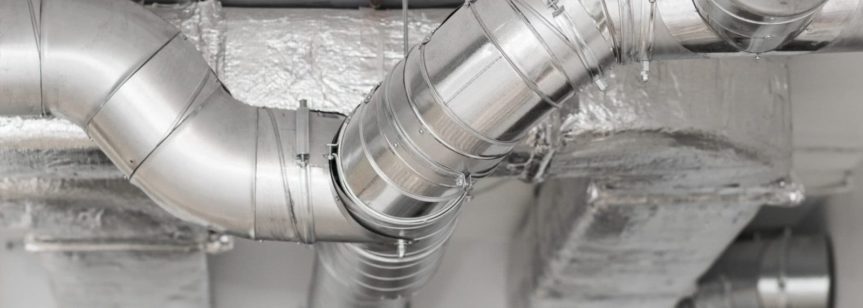How should you go about improving indoor air quality? Earlier this Fall, Mechanical Engineer Matt Bridges hosted a webinar on ways to improve indoor air quality. While you’ll want to work with an engineering firm for major system equipment or operational changes, these are six easy steps every building manager or maintenance team can take right now:
- Walk through your space. Take a moment to scan for visible problems- such as water damage on ceiling tiles or signs of mold – and make sure that bathroom exhaust fans are working. Also take note of dirty air return grilles, hot or cold spots, and obstructed supply diffusers as these could be indications of hidden issues with your system.
- Check your operations. What has changed? Why? Over the years, controls and operating procedures may change to address issues with the system, such as humidity or temperature. Identifying changes with the person in charge of operation can help you determine if your system has a larger problem requiring an engineer.
- Schedule an HVAC tune-up. Keeping your HVAC system running – and running as designed – goes a long way in maintaining healthy indoor air quality. A regular maintenance check with your HVAC servicer is the best way to catch needed repairs before they become significant problems or breakdowns. It can also help your current system operate more efficiently. Schedule the check prior to occupancy or over a weekend. Your HVAC technician will need to cut power to the system to service it, leaving your HVAC system inoperable until he / she is finished.
- Replace your filters. Replacing filters with the highest MERV rating your system can accommodate is another good starting point. ASHRAE recommends installing filters with a MERV rating of at least 13. Most HVAC systems have 2″ or 4″ deep MERV-8 filters. These MERV-8 filters all have matching MERV-13 equivalents. A word of caution: Take care when adding higher efficiency filtration. The higher the efficiency of the filter, the higher the pressure drop, or air resistance, through the filter. If the supply fans in your system are unable to overcome this additional resistance, there will be a drop in total airflow to the space. This can cause two issues: loss of temperature and humidity control in the space and a reduction in ventilation air to the space. Both of these issues can actually decrease indoor air quality. Consultation from an experienced engineering firm like Klingner should be sought before adding filtration above a MERV-13 rating.
- Temporarily turn off Demand Control Ventilation (DCV). DCV is an energy-saving feature which decreases outdoor air volume in unoccupied spaces, thereby reducing energy bills. However, this is exactly what you don’t want if you’re trying to dilute potential contaminants, like viruses or bacteria. Contact your local HVAC technician if you need assistance temporarily disabling this feature. A word of caution: disabling DCV will increase ventilation, but may also increase your energy bill.
- Change your operations. If there is a known indoor air quality issue, you can increase ventilation by operating your system in occupied mode for longer hours. You can also perform a ventilation purge a few hours prior to occupancy. This involves going into 100% ventilation or outdoor air mode to fully flush the space, then returning to your standard operating mode an hour before people are set to arrive to begin normalizing the temperature.
Further improving indoor air quality may involve a variety of strategies tailored to your unique system. Click below if you would like design support to replace, modify, or evaluate the effectiveness of your current HVAC system.
